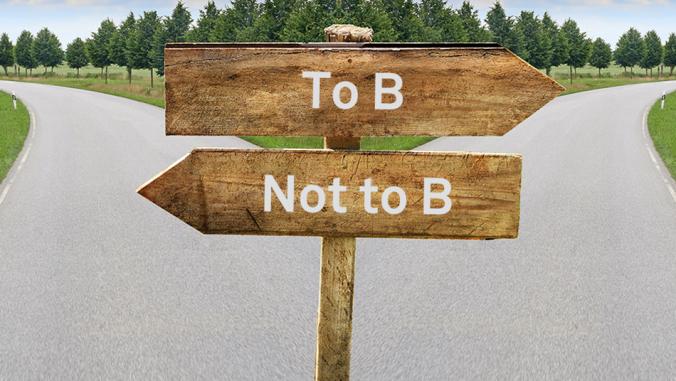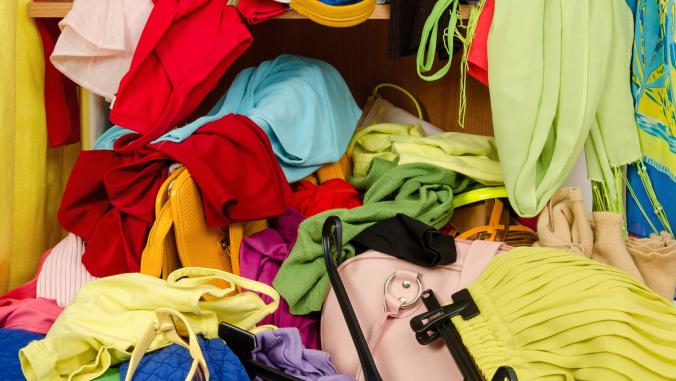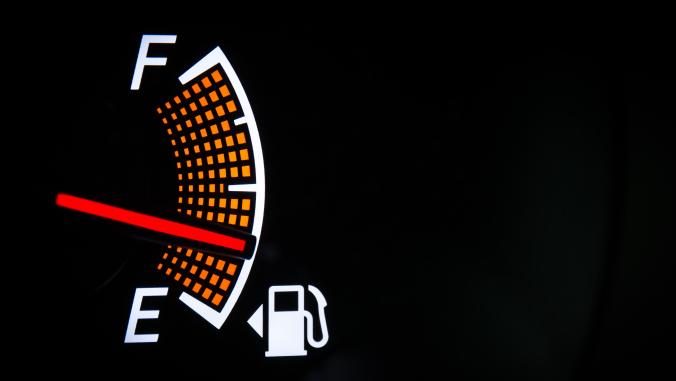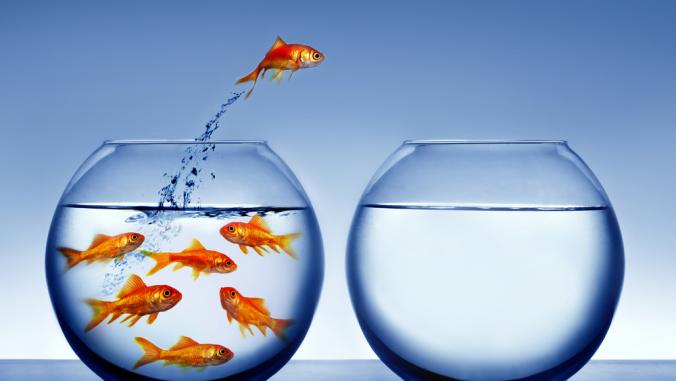Lipstick, Aveda and Wind Power
There’s encouraging news from Aveda, the hair care and beauty company that has just achieved what’s known as a cradle-to-cradle endorsement.

There’s encouraging news from Aveda, the hair care and beauty
company that has just achieved what’s known as a cradle-to-cradle
endorsement, but before I explain what that means, let me tell you why
it matters.
I’m no expert on cosmetics (to say the least) but I’ve been following with interest the controversy over so-called toxic chemicals in beauty products. Without having reported on the merits of the allegations, I can tell you that there’s a storm brewing for this industry. See the Campaign for Safe Cosmetics website, a book called Not Just A Pretty Face and any number of mommy blogs. New York’s junior senator, Kirsten Gillibrand, this week introduced the Safe Baby Products Act, which directs the FDA to “investigate and regulate hazardous contaminants in personal care products marketed to or used by children.”
Aveda need not worry about such allegations, and that’s got to be good for its business. Founded in 1978, Aveda can be pretentious in the way it talks about itself and its ideals. (The company name is a Sanskrit word for “all knowledge” and its trademarked motto is “The Art and Science of Pure Flower and Plant Essences.” I could go on, but I won’t.) But Aveda’s track record is long and impressive, and achieving the cradle-to-cradle endorsement, as well as gold-level cradle-to-cradle certification for seven of its products, means that Aveda has met high standards set by two gurus of the sustainability movement -- architect Bill McDonough and chemist and lifecyle expert Michael Braungart. You can read this greenbiz.com story for more details on the C2C products.
Cradle to cradle design is a cool idea: It aims to create products which generate no waste and are produced with renewable energy. “Cradle to cradle is a change in the paradigm of design,” says Dominique Conseil, the company president. Aveda is the first beauty products company in the world to win the endorsement, and only the second company of any kind in the U.S. (Method was the first.)
Conseil, a native of Sweden, says he feels right at home at Aveda headquarters in Blaine, Minnesota. “It was more of a culture shock to my wife, who is Japanese,” he told me, when we talked by phone. He’s been company president since 2000, a period of rapid growth for the firm. Today, Aveda has about 29,000 worldwide employees and 125 stores in the U.S. It’s one of the five biggest brands of Estee Lauder, the $8 billion a year cosmetics giant, which bought Aveda for about $350 million back in 1997.
Much of Aveda’s growth has been driven by the company’s reputation for using natural ingredients and operating in a sustainable way. It is transparent about what goes into its products and how they are made. Aveda ran a great ad campaign not long ago touting the fact that its factory was powered by wind energy -- not the typical ad you’d see from a beauty company.
Conseil says: “Our customers want performance. They want results. And they will increasingly require that it come from a company that is responsible vis a vis the community and the environment.”
I could go on at length about all the steps that Aveda has taken towards sustainability, as well as its support for indigenous people in poor countries. Instead, I’ll just link to this list of unusual milestones in Aveda’s history (1993 -- ”Aveda forms its first indigenous partnership with the Yawanawa tribe in the Brazilian Rainforest to source uruku, a red dye used in Aveda makeup”) and tell you a story about lipstick.
I’d paid no attention to lipstick packaging until Conseil told me that lipstick cases have traditionally been a way to convey a brand’s image.
“Ladies often consider the lipstick as a status symbol, and it has to reflect that emotional investment,” he said. Who knew? “There was the perception that the lipstick case needs to be a beautiful object…That it needs to be massive. It needs to be heavy.”
This is, of course, wasteful, particularly because, until Aveda came along, all lipstick cases were throwaways. In 2003 -- with some trepidation -- Aveda introduced a refillable lip color case.
According to the company, its base is made of up to 65 percent post-consumer recycled aluminum; its cap is 30 percent natural flax fibers. Aveda also sells makeup clamshell packaging made from 100 percent PCR newsprint. Not very romantic, but so it goes.
Now refillable lipstick cases are not for everybody -- Aveda still sells the throwaway kind -- but it they work, and some people really like them. The company expected its customers to refill the case three times; it turns out many of them refill it six times before throwing it away. That’s progress, albeit on a small scale. It’s also good business for Aveda because the company can sell more lipstick and spend less money on packaging. It would be great if more companies sought creative ways to cut back on packaging waste.
And here’s another thing I learned about lipstick. It’s made with dead beetles. (Even my 21-year-old daughter didn’t know that.) It turns out that many lipsticks get their red, glossy look from carmine pigments, a red color taken from the dried and crushed shells, wings, and eggs of the female cochineal beetle.
Now this has been true since the days of Cleopatra so there’s no cause for alarm. But Aveda has eliminated carmine from its lipsticks, instead using a combination of raspberry wax, capuacu butter (it’s a Brazilian fruit), jojoba oil and bilberry oils in its lipstick, at least according to this investigative report from New York magazine, which, somehow, I overlooked when it ran last year.
This is why I love my work. Coal plants, one day. Lipstick, the next.
Images courtesy of Aveda.
I’m no expert on cosmetics (to say the least) but I’ve been following with interest the controversy over so-called toxic chemicals in beauty products. Without having reported on the merits of the allegations, I can tell you that there’s a storm brewing for this industry. See the Campaign for Safe Cosmetics website, a book called Not Just A Pretty Face and any number of mommy blogs. New York’s junior senator, Kirsten Gillibrand, this week introduced the Safe Baby Products Act, which directs the FDA to “investigate and regulate hazardous contaminants in personal care products marketed to or used by children.”
Aveda need not worry about such allegations, and that’s got to be good for its business. Founded in 1978, Aveda can be pretentious in the way it talks about itself and its ideals. (The company name is a Sanskrit word for “all knowledge” and its trademarked motto is “The Art and Science of Pure Flower and Plant Essences.” I could go on, but I won’t.) But Aveda’s track record is long and impressive, and achieving the cradle-to-cradle endorsement, as well as gold-level cradle-to-cradle certification for seven of its products, means that Aveda has met high standards set by two gurus of the sustainability movement -- architect Bill McDonough and chemist and lifecyle expert Michael Braungart. You can read this greenbiz.com story for more details on the C2C products.
Cradle to cradle design is a cool idea: It aims to create products which generate no waste and are produced with renewable energy. “Cradle to cradle is a change in the paradigm of design,” says Dominique Conseil, the company president. Aveda is the first beauty products company in the world to win the endorsement, and only the second company of any kind in the U.S. (Method was the first.)
 |
Conseil, a native of Sweden, says he feels right at home at Aveda headquarters in Blaine, Minnesota. “It was more of a culture shock to my wife, who is Japanese,” he told me, when we talked by phone. He’s been company president since 2000, a period of rapid growth for the firm. Today, Aveda has about 29,000 worldwide employees and 125 stores in the U.S. It’s one of the five biggest brands of Estee Lauder, the $8 billion a year cosmetics giant, which bought Aveda for about $350 million back in 1997.
Much of Aveda’s growth has been driven by the company’s reputation for using natural ingredients and operating in a sustainable way. It is transparent about what goes into its products and how they are made. Aveda ran a great ad campaign not long ago touting the fact that its factory was powered by wind energy -- not the typical ad you’d see from a beauty company.
Conseil says: “Our customers want performance. They want results. And they will increasingly require that it come from a company that is responsible vis a vis the community and the environment.”
I could go on at length about all the steps that Aveda has taken towards sustainability, as well as its support for indigenous people in poor countries. Instead, I’ll just link to this list of unusual milestones in Aveda’s history (1993 -- ”Aveda forms its first indigenous partnership with the Yawanawa tribe in the Brazilian Rainforest to source uruku, a red dye used in Aveda makeup”) and tell you a story about lipstick.
I’d paid no attention to lipstick packaging until Conseil told me that lipstick cases have traditionally been a way to convey a brand’s image.
“Ladies often consider the lipstick as a status symbol, and it has to reflect that emotional investment,” he said. Who knew? “There was the perception that the lipstick case needs to be a beautiful object…That it needs to be massive. It needs to be heavy.”
This is, of course, wasteful, particularly because, until Aveda came along, all lipstick cases were throwaways. In 2003 -- with some trepidation -- Aveda introduced a refillable lip color case.
According to the company, its base is made of up to 65 percent post-consumer recycled aluminum; its cap is 30 percent natural flax fibers. Aveda also sells makeup clamshell packaging made from 100 percent PCR newsprint. Not very romantic, but so it goes.
Now refillable lipstick cases are not for everybody -- Aveda still sells the throwaway kind -- but it they work, and some people really like them. The company expected its customers to refill the case three times; it turns out many of them refill it six times before throwing it away. That’s progress, albeit on a small scale. It’s also good business for Aveda because the company can sell more lipstick and spend less money on packaging. It would be great if more companies sought creative ways to cut back on packaging waste.
And here’s another thing I learned about lipstick. It’s made with dead beetles. (Even my 21-year-old daughter didn’t know that.) It turns out that many lipsticks get their red, glossy look from carmine pigments, a red color taken from the dried and crushed shells, wings, and eggs of the female cochineal beetle.
Now this has been true since the days of Cleopatra so there’s no cause for alarm. But Aveda has eliminated carmine from its lipsticks, instead using a combination of raspberry wax, capuacu butter (it’s a Brazilian fruit), jojoba oil and bilberry oils in its lipstick, at least according to this investigative report from New York magazine, which, somehow, I overlooked when it ran last year.
This is why I love my work. Coal plants, one day. Lipstick, the next.
Images courtesy of Aveda.





